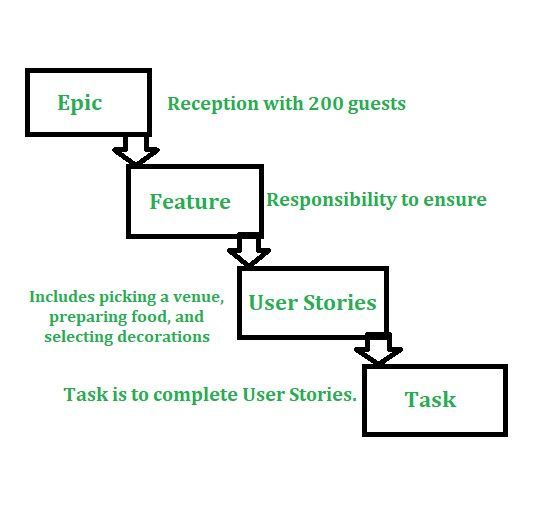
Write something
[P3] When to Use Customer Journey Mapping
This technique is most useful when trying to improve customer experience, launch a new product or service, or enter a new market. It's often used at the start of a project to inform the design process but can also be revisited throughout to validate and refine. 💪Strengths of Customer Journey Mapping •Customer-Centricity: It ensures a focus on customer needs and experiences. •Breadth and Depth: It provides both a broad view of the customer's journey and the ability to delve into specific interactions. •Cross-Functional Understanding: It encourages cross-functional understanding and collaboration. •Identify Opportunities for Improvement: It effectively highlights areas for improvement or innovation. ⚠️Weaknesses of Customer Journey Mapping •Time-Consuming: It can be time-consuming to create and maintain. •Requires a Wide Range of Data: It requires a wide range of data to accurately reflect the customer's journey. •Subjectivity: Without solid data, it can be based on assumptions that lead to a skewed understanding of the customer experience
1
0
![[P3] When to Use Customer Journey Mapping](https://assets.skool.com/f/f7a7225a788748e8bfaf9ba762ffd8a1/4a61697ce4624cc596868a79c5c405365c732a64da904ab6ad9a0628cbcb5dee-md.jpg)
🌟A Fun Experience with AI in the Work of a Business Analyst
If you're a Business Analyst looking to work more efficiently, then the article I'm sharing below will be extremely helpful, and I think you'll like it💡 This article explains how to use AI to create diagrams quickly and easily. I've tried it myself and found that this tool really saves a lot of time, especially when dealing with complex processes. Instead of getting bogged down in the details, you can focus more on the important parts like analysis and decision-making. I think this is a pretty useful solution worth trying. If you want more details, check out the article linked in the comments below! Source: Hoang BA Blog.
0
1
New comment Aug 27

[P2] Customer Journey Mapping
How to apply the Technique Customer Journey Mapping 1. Define Personas 👥📝 Begin by defining personas. Personas represent different customer types based on their unique behaviors, goals, needs, and frustrations. 2.Identify Touchpoints 📱🌐 Identify every point of interaction that customers have with your organization (website, customer service, social media, etc.). 3. Map the Journey 🗺️📊 Create a visual representation of the customer's journey. Include each phase the customer goes through (awareness, consideration, purchase, use, loyalty), their goals, emotions, touchpoints, and actions at each stage. 4. Validate and Refine ✅🔄 Validate the journey map with real customer data if possible, and refine as necessary.
0
0
![[P2] Customer Journey Mapping](https://assets.skool.com/f/f7a7225a788748e8bfaf9ba762ffd8a1/7ee49a74827147dab9041eedc5ea913a5306ab26aae94ac9ba74a31d9c2798f6-md.jpg)
[P1] Customer Journey Mapping
Introduction Customer Journey Mapping is a visual representation of the process a customer goes through to achieve a goal within your organization. It's a powerful technique that allows business analysts to empathize with customers and understand their experiences to identify areas for improvement. Why It's Useful and Benefits •Empathy🤝: It helps you empathize with customers by viewing their interactions from their perspective. •Identifying Pain Points🩹: It enables the identification of areas where customers encounter difficulties or frustrations. •Improving Customer Experience🚀: It provides a means to enhance customer experience by streamlining and optimizing the customer journey. •Alignment Across the Organization🧩: It ensures every department understands and is aligned on how customers interact with your organization. •Identifying Opportunities🌟: It uncovers areas where new products or services could be introduced.
0
0
![[P1] Customer Journey Mapping](https://assets.skool.com/f/f7a7225a788748e8bfaf9ba762ffd8a1/1053dccbf7c242f5ab7aff9e75bc12ef03a0996ce66941079f462e0163795a21-md.jpg)
Understanding Epics, Features, and User Stories through a story
Imagine you are planning a big family reunion. This event has many details to manage, so you decide to break it down into more manageable parts. 📅Epic: The Big Picture An Epic is the big picture—the family reunion itself. It’s a broad goal that includes many tasks such as organizing food, sending invitations, and planning activities. The Epic gives you a clear vision of what you want to achieve. 🔍Features: Breaking It Down You break the Epic into specific features such as “Organize Food,” “Send Invitations,” and “Plan Activities.” Each feature should: - Provide business value: Ensure a positive impact on the overall goal. - Be estimable: Clear enough for the team to estimate the work involved. - Be small enough to fit within 1-3 sprints: If too large, it should be broken down further. - Be testable: Testing criteria must be clear. 📝User Stories: Getting Specific User Stories are specific tasks within each feature. For example, for “Organize Food,” a User Story could be: “As a guest, I want to choose between different meal options so I can enjoy food I like.” These User Stories help complete the feature and contribute to achieving the Epic. In summary, Epics, Features, and User Stories help you manage large projects by breaking them down, ensuring every part is well-organized and nothing is overlooked🚀 ***Source: LinkedIn
2
0

1-30 of 153

skool.com/business-analyst-academy-5043
Business Analyst Academy is a community for those passionate about Business Analysis. Join to learn, share, and grow together.
powered by





